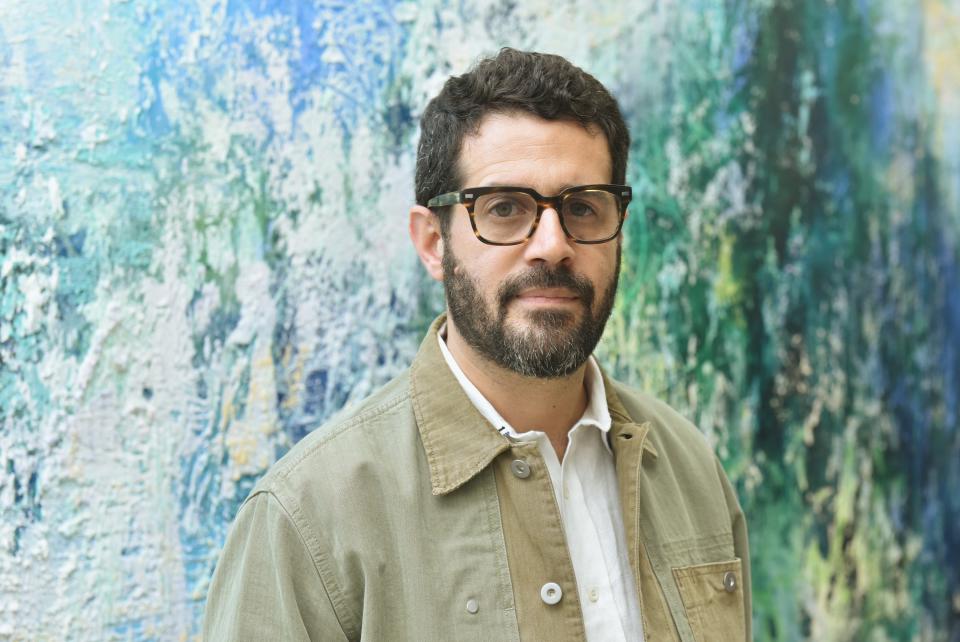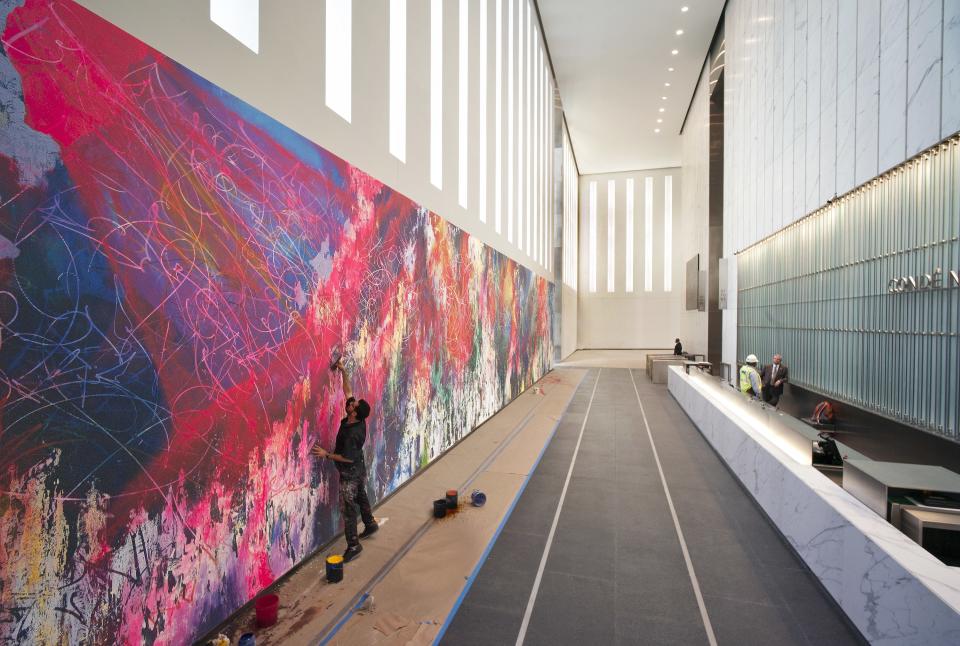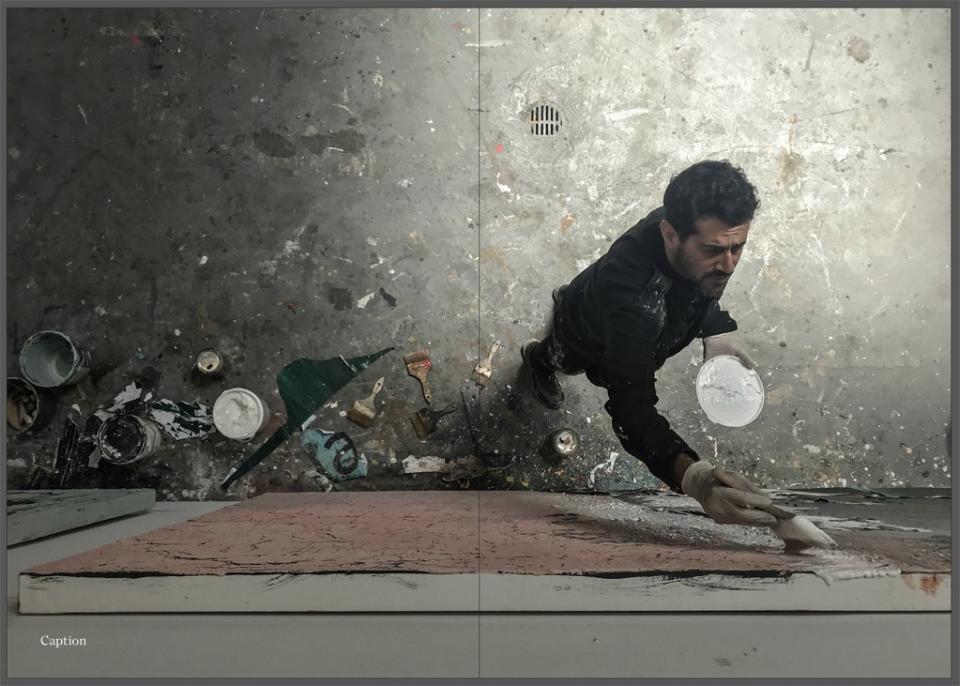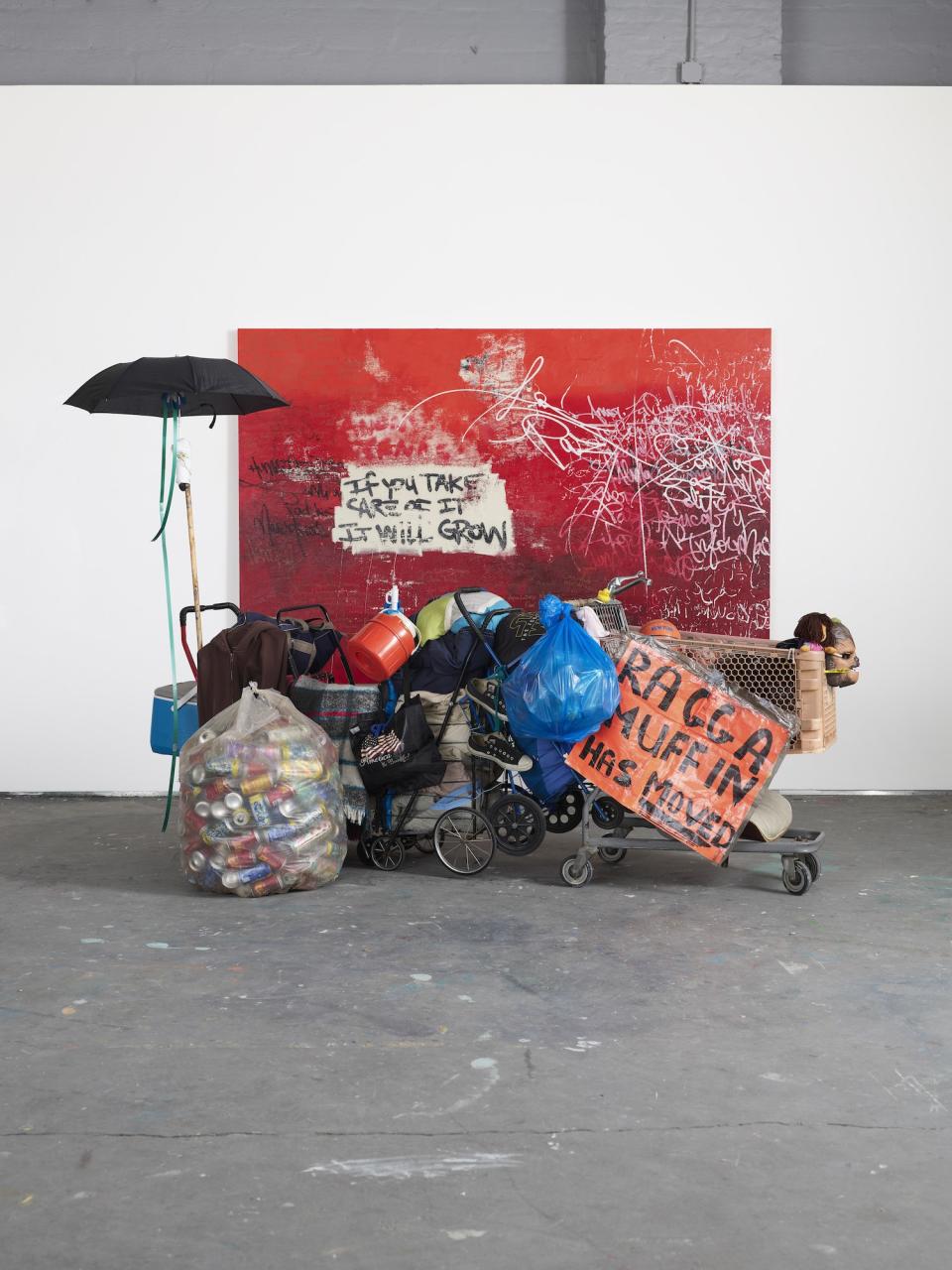Inside José Parlá's Snøhetta-Designed Studio Before His Major Solo Exhibition
Both in his life and his work, José Parlá is the very embodiment of a palimpsest. He's amiable and kind on the surface, but scratch a little deeper and there's a lifetime of experiences bubbling, memories of obstacles overcome to achieve artistic success. Much like his life, Parlá's work is layered and verging on the third dimension. When observed from a distance, there are numerous applied coats that, one gets the strong sense, if pulled back will unlock some mystical energy and transpose the viewer to a different epoch. Yet look closer and his art is a massive collage that's a cacophony of oil paints, acrylic finishes, scattered words, and torn old advertisements. His work has real movement (Parlá often jumps from the top of a ladder while creating an arcing curve on the canvas). At other times, his art looks the way thinking often feels: fluid, hurried, spontaneous, measured, exciting, never-ending. And it's at his forthcoming solo exhibition in New York's Bryce Wolkowitz Gallery that Parlá's artistic energy will be felt in works that are haunting and brilliant in composition, while direct and subtle in symbolism. Indeed, at its best, art is the most direct line to our deepest emotions. But it requires surrendering ourselves to a world that's fundamentally different to our own. The return, however, can often mean a moment of pure exaltation.
It's been five years since Parlá's monumental 90-foot-long mural was installed in the lobby of 1 World Trade Center (the New York home to Architectural Digest's parent company, Condé Nast). Since then, the Miami-born artist has labored on innumerable works of art, mounting exhibitions at increasingly prestigious galleries—which has catapulted his name as one of the most exciting artists in America. His work has garnered the attention of other celebrated artists (albeit ones who work in music) such as Jay-Z and Eric Clapton. Indeed, as Parlá's stock has risen, his life has become peripatetic, with exhibitions at the High Museum of Art in Atlanta, the Agnès B. Galerie du Jour in Paris, Tokyo's Yuka Tsuruno Gallery, the Brand New Gallery in Milan, among others. Yet New York, more specifically, Brooklyn, remains a fixed flag on the map of his travels.

Jose Parla "Roots" Exhibition Opening
José Parlá spends most of his time working within his Brooklyn studio. Located in the industrial enclave of Gowanus, the Snøhetta-designed space has provided Parlá the opportunity to concoct his latest series of hyper-abstractionist work for his forthcoming show, "Anonymous Vernacular," at New York's Bryce Wolkowitz Gallery. The Chelsea gallery will showcase 14 paintings and one reworked found-object sculpture by the artist. "Ever since I can remember, my eyes have been drawn to what people had scribbled or spray-painted or drawn on street walls," says Parlá. By his understanding, walls are as old as time, and as such, are one of the original canvases that humanity was drawn to in expressing themselves. The upcoming exhibition (which runs from April 25 through June 29) is certainly a departure from Parlá's previous work. Gone are the collages of popping yellow like broken egg yolk, candy-colored pastels, purples of a healing bruise, clouds of dark gray paint that appear poised to drop heavy rain at any moment, Pollock-esque splashes of white, or Twombly-like lines that commands the viewer's absolute attention (the latter artist is one of Parlá's influences, though the Cuban-American is decidedly more outgoing than the notoriously demure Twombly).

For this series, it's as if Parlá is producing art on the wall of time itself. Words and phrases appear in the viewer's frame, confronting us to consider their meaning, only to recede like waves in an ocean of additional words and colors and lines. In one work, the following names and phrases can be found scribbled on the canvas: Alexandria Ocasio-Cortez, Jose Antonio Vargas + Chris Rock, HABANA VIEJA, If you TAKE CARE Of IT IT WiLL GROW. (The last phrase came from a conversation Parlá had with a friend upon finding one of his own plants on the verge of drying out—according to the artist the plant is on the mends.) The writing is displayed for the viewer in bold, graffiti-like swoops or more modest informal, offhand listicle forms. "Ancient calligraphy doesn't exist in America; we are too young of a country for that type of script," says Parlá. "But centuries from now, if and when America develops its own type of calligraphy, it will certainly come from the grit of the streets, of what was recorded on its walls. That's what is pushing me to capture this moment." If viewers look at this as Parlá attempt to record the grittiness of urbanism before its cleaned by the powerful sweep of gentrification, they would be correct. "I want to capture these moments in the street before they disappear. One day, maybe in the not-so-distant future, walls like the ones we have seen for the past 50 years in cities like New York, Miami, or Los Angeles…they simply won't exist anymore."

To that end, Parlá's other work that will be on display features, apart from oil paint and acrylic finishes, torn bits of old advertisements that the artist has collected over the years. "Sometimes I'll see an old advertisement on my way to dinner in Chinatown, or parts of Brooklyn," Parlá says with a smile, "and after the meal is over, I'll run out, tear it down, and take it straight to my studio." It's the collage-like quality of layered paint flecked with old bits of torn advertisements that truly gives the viewer a sense of a wall they've seen before but can't place its time or location.

The exhibition has one reworked found-object sculpture, which could be viewed as the crux of the show. It's composed of two larger shopping carts, dozens of aluminum cans, old shoes, discarded vinyl records, and other similar objects that encapsulate the smallest yet most profound snapshot into the world of the homeless. "There were two homeless people living in the neighborhood who I saw all the time," explains Parlá, "but then one day I showed up to my studio and their two carts were there, and many of their belongings were scattered along on the sidewalk. I haven't seen them for two years."
Parlá's found-object sculpture is perhaps the most easily identifiable work at the exhibition, but it's one that he hopes has the biggest impact on the viewer. "I don't want people to come to the show and have a quick-and-easy understanding of what they're seeing," he explains. "I want them to leave and have some time to truly think about it, and maybe after a few days or weeks, or even months, they'll come to a conclusion of what my work means in the context of their own lives. And I hope this propels them, in ways big or small, to give something back to society at large, or just one individual in need. For me, that will mean the work has been successful."

